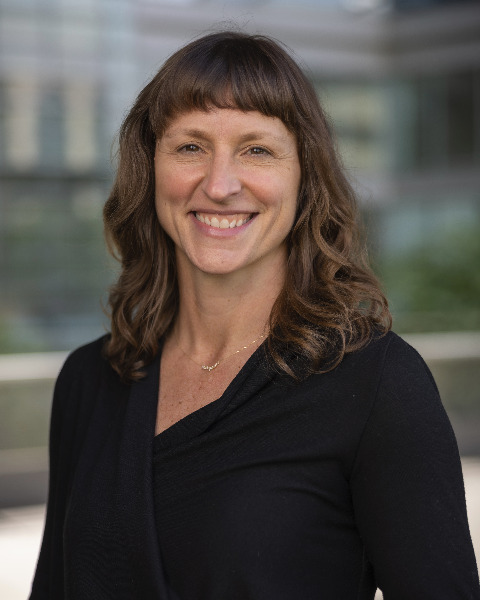Oral Presentation
Drug Utilization/Health Services Research
OP3-4 - Utilization of Treat-to-Target Monitoring Colonoscopy after Treatment Initiation in the US-Based Study of a Prospective Adult Research Cohort with Inflammatory Bowel Disease (SPARC IBD)

Jeff Y. Yang, MSPH (he/him/his)
Associate Director, Epidemiology
GSK
Chapel Hill, NC, United States
Jennifer L. Lund, PhD, FISPE (she/her/hers)
Associate Professor
Department of Epidemiology, Gillings School of Global Public Health, University of North Carolina at Chapel Hill
University of North Carolina at Chapel Hill
Chapel Hill, NC, United States
Michele Jonsson Funk, PhD, FISPE (she/her/hers)
Associate Professor
UNC Chapel Hill Gillings School of Global Public Health
Chapel Hill, North Carolina, United States- MH
Michael Hudgens, PhD
Professor and Associate Chair
Gillings School of Global Public Health, University of North Carolina at Chapel Hill, United States - JL
James D. Lewis, MD MSCE
Professor of Medicine and Epidemiology
Division of Gastroenterology and Hepatology, Perelman School of Medicine at the University of Pennsylvania, United States - MK
Michael D. Kappelman, MD, MPH
Professor
Division of Pediatric Gastroenterology, Department of Pediatrics, University of North Carolina at Chapel Hill School of Medicine, Chapel Hill, NC, United States
Presenting Author(s)
Author(s)
Background: Endoscopic healing has been associated with improved long-term clinical outcomes in inflammatory bowel disease (IBD) and is a recommended target for treatment. However, evidence is limited regarding real-world uptake and patterns of routine treat-to-target monitoring to assess endoscopic healing following treatment initiation. We aimed to estimate the proportion of patients in the Study of a Prospective Adult Research Cohort with IBD (SPARC IBD) who received colonoscopy in the 3-15 months after starting a new IBD treatment. Methods: We identified SPARC IBD patients who initiated a new biologic (infliximab, adalimumab, certolizumab pegol, golimumab, vedolizumab, ustekinumab) or tofacitinib. Patients were excluded if they underwent prior total colectomy, or if they could not be classified with either Crohn’s disease (CD) or ulcerative colitis (UC). Treat-to-target colonoscopies – including capsule endoscopy, colonoscopy, flexible sigmoidoscopy, pouchoscopy, small bowel endoscopy, and esophagogastroduodenoscopy – were defined as those that occurred 3-15 months following treatment initiation, and were identified using both case-report forms and linked electronic medical records. We estimated the proportion of patients who received colonoscopies in the 3-15 months following IBD treatment initiation, and described use by calendar year of initiation and by key patient subgroups. Patients could contribute >1 eligible initiation. Results: Among 1,708 eligible initiations from 2017-2022, the most common medications were ustekinumab (32%), infliximab (22%), vedolizumab (20%), and adalimumab (16%). Median patient age was 38 years, with 66% CD, 55% female, and 12% non-white. In the 3-15 months following medication initiation, 49.3% (95% confidence interval (CI), 46.2-52.5%) of initiations were followed by a colonoscopy. Colonoscopy use did not differ substantially between patients with CD (49.0%; 95% CI, 45.1 – 52.9%) vs. UC (49.9%; 95% CI, 44.6 – 55.2%), or by IBD severity. Colonoscopy use varied between study sites, ranging from 26.6% (95% CI, 15.0 – 38.3%) to 63.2% (95% CI, 54.5 – 72.0%). We observed a mild decrease in estimated colonoscopy use after 2019, but overall did not observe appreciable differences by calendar year of initiation. We estimated slightly higher colonoscopy use among male patients (51.0% vs. 48.1% among female patients), those over age 40 (53.3% vs. 45.8% among those under 40), and those who identified as black (54.6% vs. 49.4% among patients identified as white). Estimated colonoscopy use was also higher among patients who initiated vedolizumab (54.8% vs. 49.8% for infliximab, 46.7% for adalimumab, and 47.9% for ustekinumab) and who received colonoscopy shortly (within 3 months) after treatment initiation (62.8% vs. 46.5% among patients who did not receive colonoscopy in the first 3 months). Conclusions: About half of SPARC IBD patients received colonoscopy in the 3-15 months following initiation of new IBD treatment, suggesting limited uptake of treat-to-target monitoring colonoscopy for assessment of mucosal healing in real-world clinical practice. Although endoscopic healing offers a promising target for assessment of treatment effectiveness in IBD, further investigation is needed to evaluate whether T2T colonoscopy improves long-term clinical outcomes.
